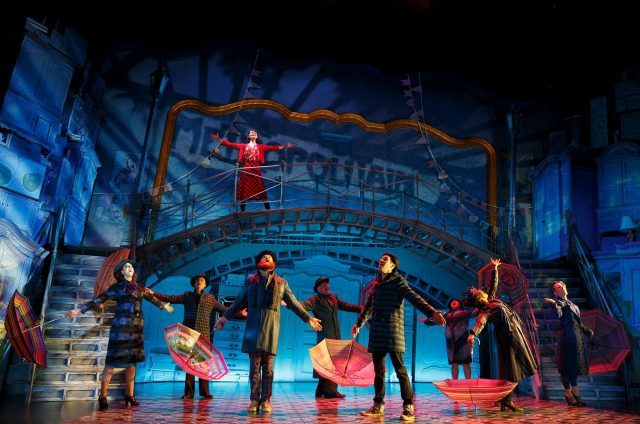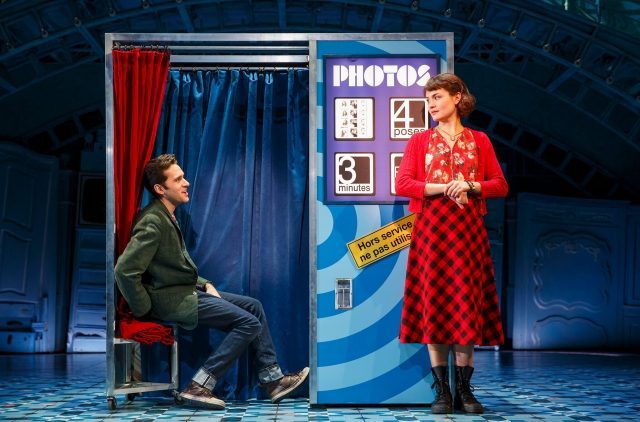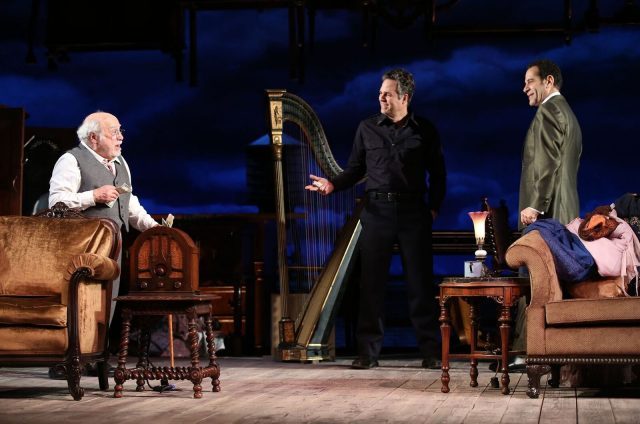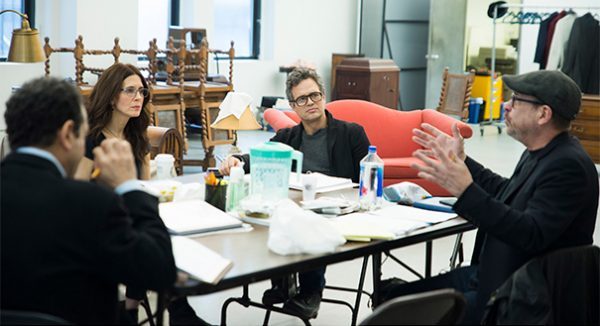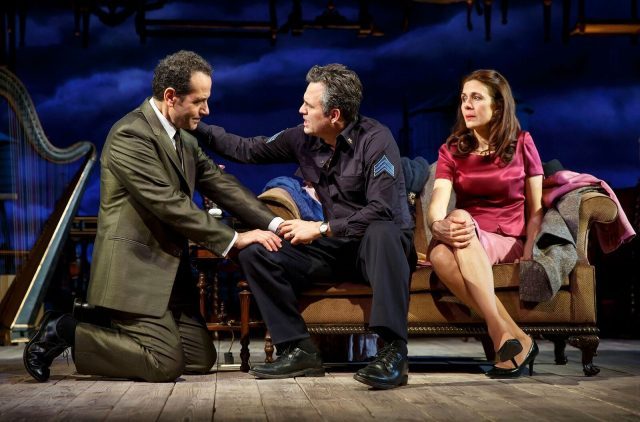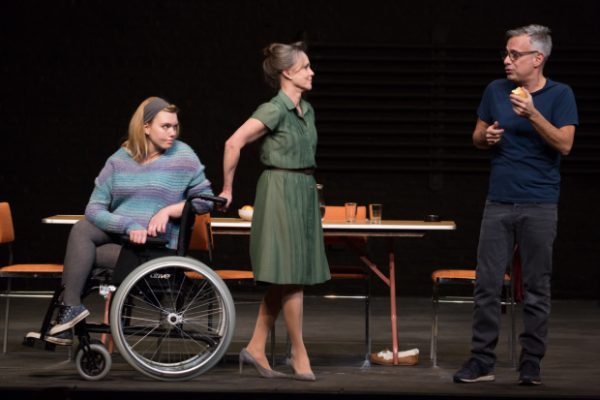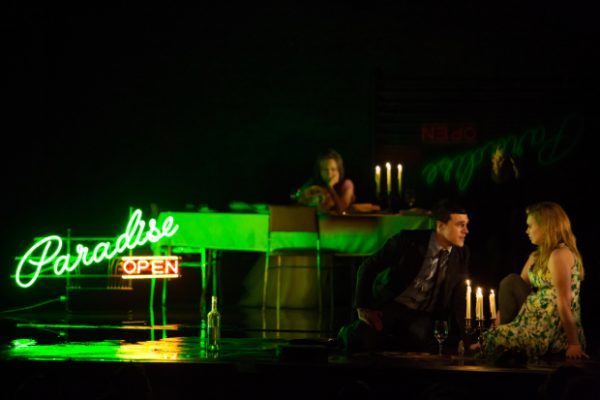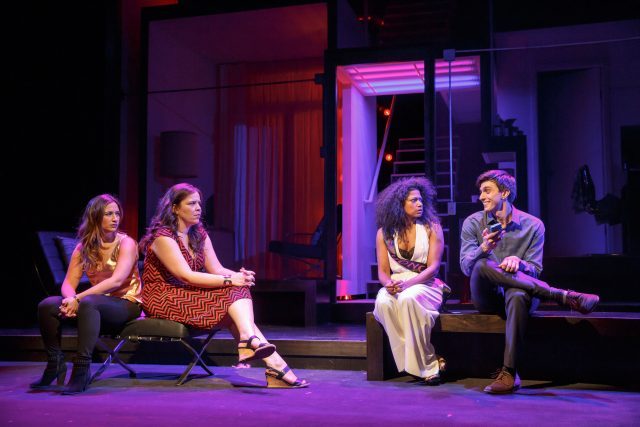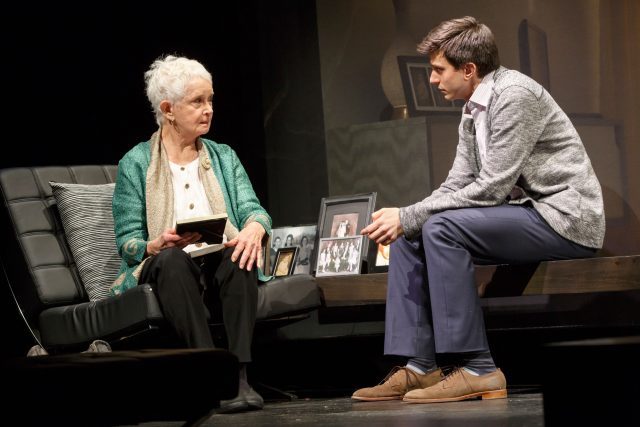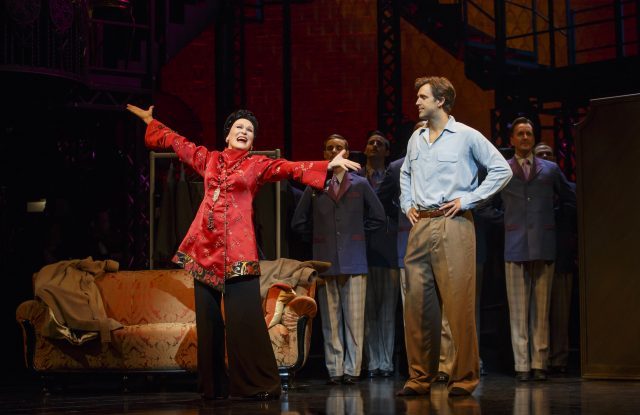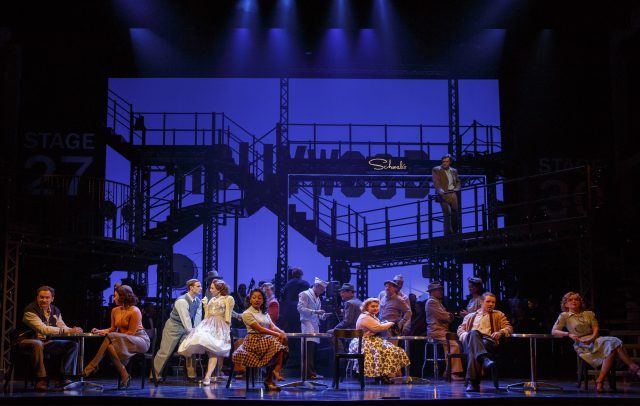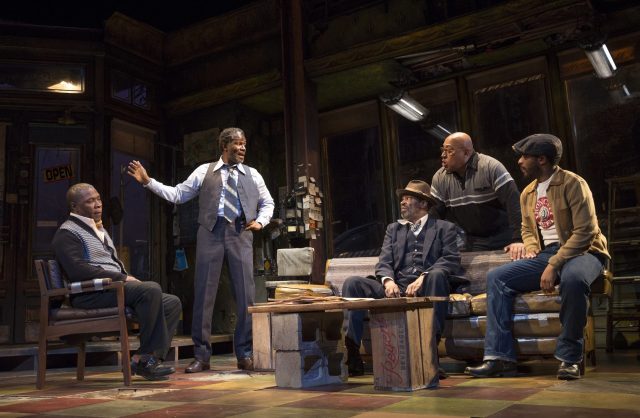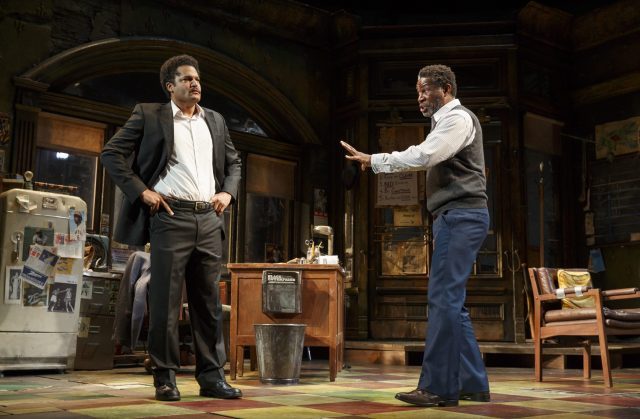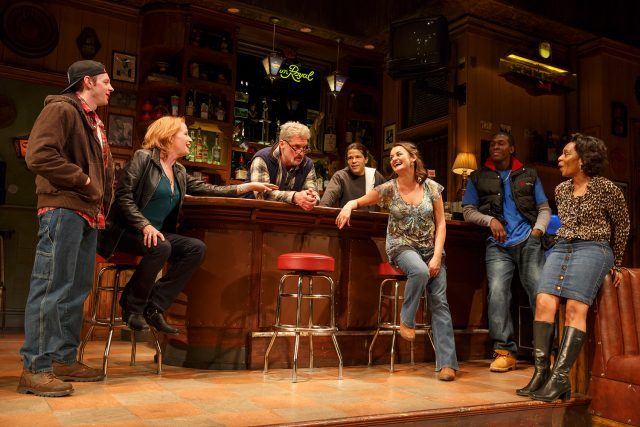
A local bar serves as the main set in Broadway production of Lynn Nottage’s SWEAT
Studio 54
254 West 54th St.
Tuesday – Sunday through October 1, $59-$149
212-719-1300
sweatbroadway.com
Pulitzer Prize-winning playwright Lynn Nottage at last makes her Broadway debut with the timely Sweat, as powerful and searing at Studio 54 as it was last year at the Public Theater. The two-act play takes place in 2000 and 2008 in Reading, Pennsylvania, where the futility of the American dream is on display. The play opens with a scene in 2008, as former best friends Chris (Khris Davis) and Jason (Will Pullen) have been released from prison after eight years behind bars for an undisclosed crime. Flashback to 2000, when factory workers Cynthia (Michelle Wilson), Chris’s mother, who’s married to the drug-addicted Brucie (John Earl Jelks); Tracey (Johanna Day), Jason’s mother; and Jessie (Alison Wright), a divorced drunkard, are celebrating a birthday in a bar run by former factory worker Stan (James Colby) and his bus boy, Oscar (Carlo Albán). When a front-office job at the factory becomes available, Cynthia shows an interest in getting off the floor, leading to dissension in the ranks, jealousy, envy, and, ultimately, violence.
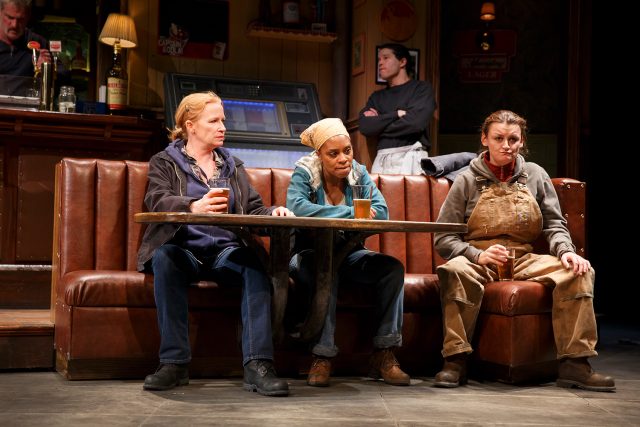
Tracey (Johanna Day), Cynthia (Michelle Wilson), and Jessie (Alison Wright) weigh their options over pints of beer in SWEAT
Sweat has transferred exceedingly well from the Public to Broadway, with only very minor tweaks to the script by Nottage (Intimate Apparel, Meet Vera Stark), while the direction by Kate Whoriskey (How I Learned to Drive, The Piano Teacher), who also helmed Nottage’s Ruined, is even sharper. The only cast change is Wright (The Americans), who adds more depth to the role of Jessie; Lance Coadie Williams also returns as a parole officer assigned to Chris and Jason, along with John Lee Beatty’s expertly designed rotating set. (All of the actors give strong performances, but Day stands out as a single mother who is willing to see only so far in front of her.) The play gets right to the heart of what has been happening in the United States during and after the recent presidential campaign, as Democrats and Republicans continue to argue over jobs, particularly in the Rust Belt. Nottage did a lot of firsthand research in Reading, the steel and textile town that was ranked as the most impoverished city in America in 2011 and has remained in the top ten ever since, with extremely high unemployment and low education leading to a poverty rate of more than forty percent. She met with many of the struggling people there, encountering feelings of desperation, sadness, and betrayal, and turned their poignant stories into Sweat, a fierce and fiery work with plenty of heart and soul, a brilliant microcosm of a deeply divided nation where hardworking people have to live with choices no one should be forced to make. [Ed. note: Sweat has just earned Nottage her second Pulitzer Prize, announced on April 10; she also won in 2009 for Ruined, making her the first female playwright to win multiple Pulitzers.]
